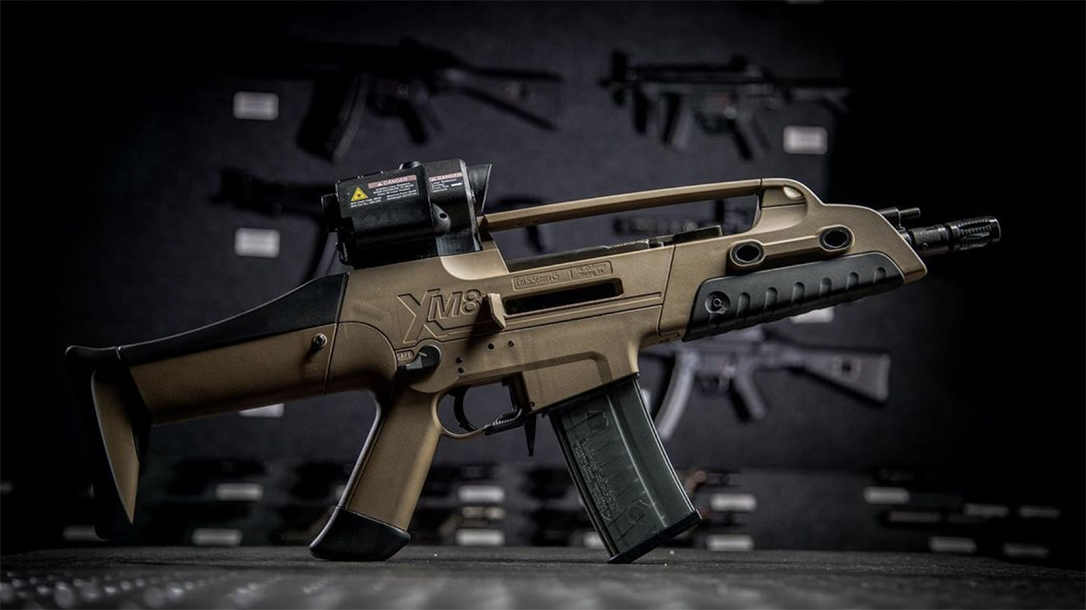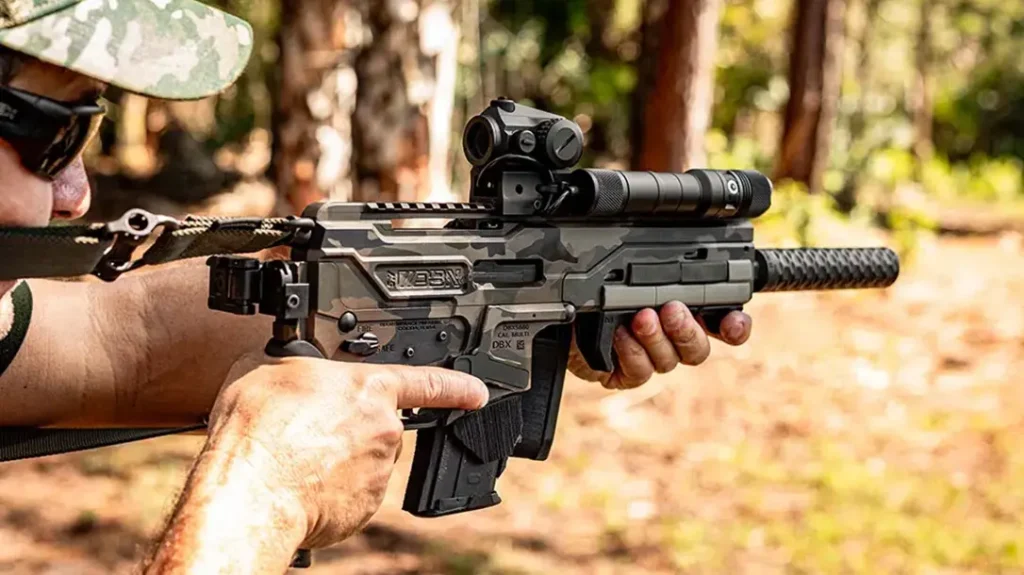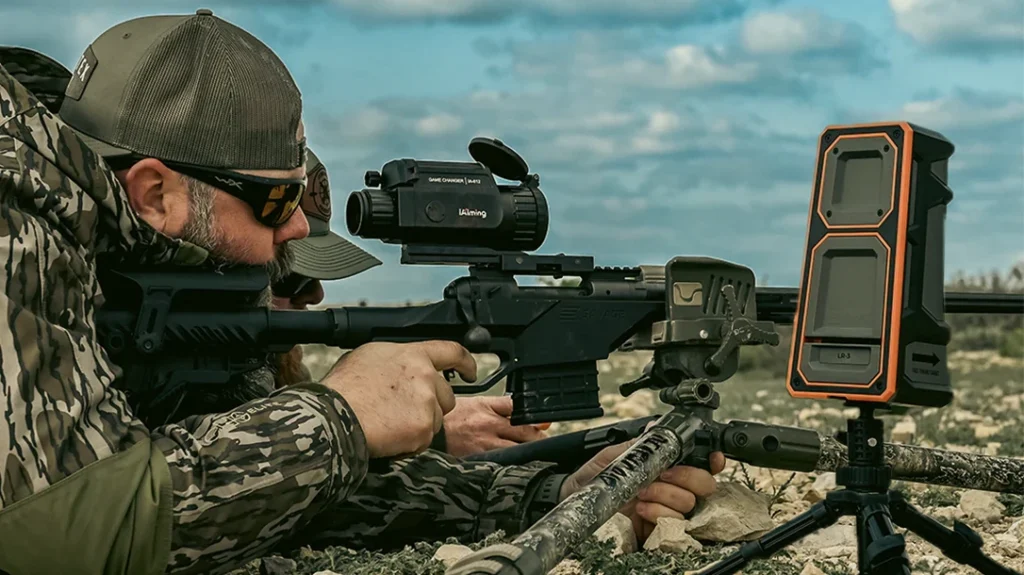Like SEC football, fans of HK firearms are dedicated, loyal, and, in some cases, rabid. And, like Dawg, Tide, and War Eagle fans, they are willing to stick with their team through the hard times to get to the good times! And good things are happening at HK, now known as HK-USA. In the early 2000s, HK moved much of its administrative operations to Columbus, Georgia. In 2017, they announced the building of a new 50,000-square-foot production facility.
The HK Gray Room
When HK closed their Virginia offices, one of the concerns was what would happen to the Gray Room. The Gray Room was where HK displayed historical firearms that have played a significant role in the history of the company. The contents of the Gray Room had been packed up and were being stored at the corporate headquarters in Georgia. The current management at HK-USA knew the significance of the Gray Room and set out to create the Gray Room 2.0. I am fortunate to live within a couple of miles of HK-USA and was able to observe the construction and fitting out of the new displays. It is, without any doubt, the most extensive display of prototypes and historically significant HK firearms in the United States.
PISTOLS
VP70
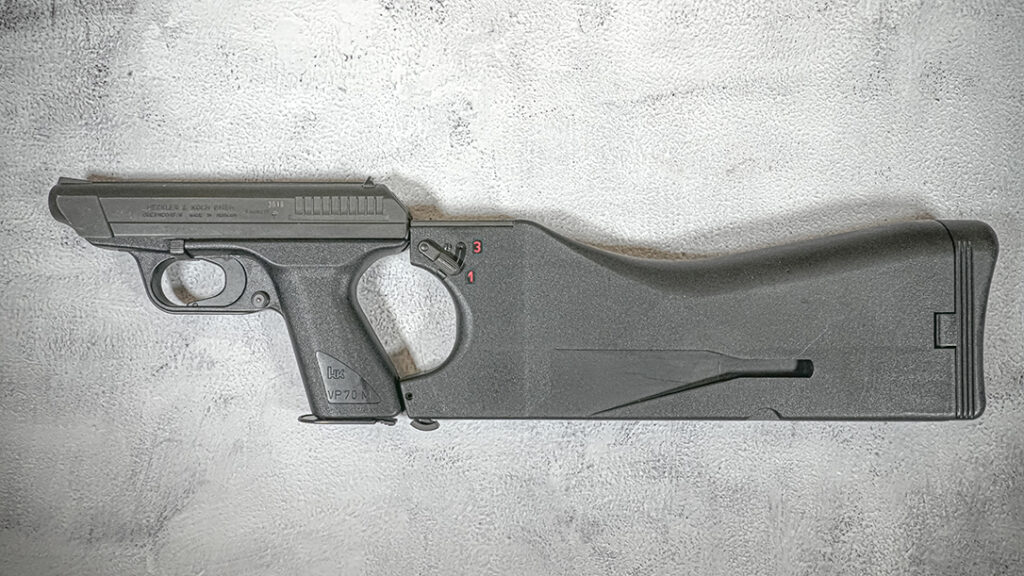
Advertisement — Continue Reading Below
Introduced in 1970, the VP70 was the first polymer-framed handgun. Chambered in 9mm, it had a magazine capacity of 18 rounds. It was unique in that, when the stock was attached, it was capable of both semi-auto fire and three-round burst. A semi-auto-only version was made for the civilian market. The VP70 was a large pistol with a very heavy, double-action-only trigger pull. It many ways, it was the forerunner of today’s modern striker fired service pistols.
P7
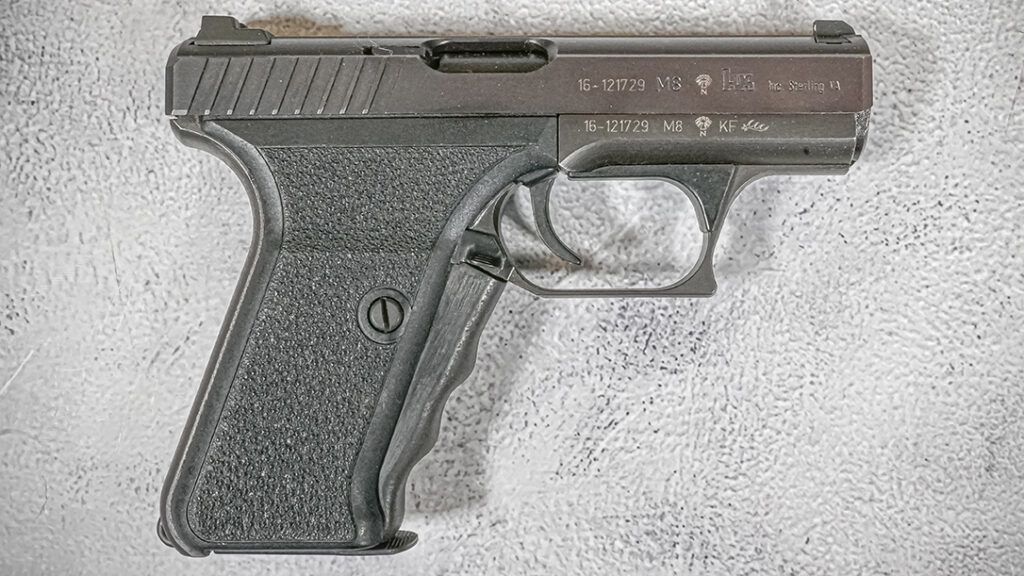
Perhaps the most sought after HK pistol is the P7. Initially introduced in 1976 as the PSP, Police Self-loading Pistol, the P7 featured a revolutionary squeeze cocking system. By depressing the lever on the front of the grip, the pistol was cocked and fired with a single-action trigger. When the lever was released, the pistol was safe, and could not fire. The P7 also featured a gas-delayed blow-back system and a fluted chamber. Later models included the improved P7M8, the high–capacity P7M13, and P7M10 in .40 S&W. A smaller designed P7 was also offered in .22 LR, .32 ACP, and .380 ACP.
Advertisement — Continue Reading Below
P7M7
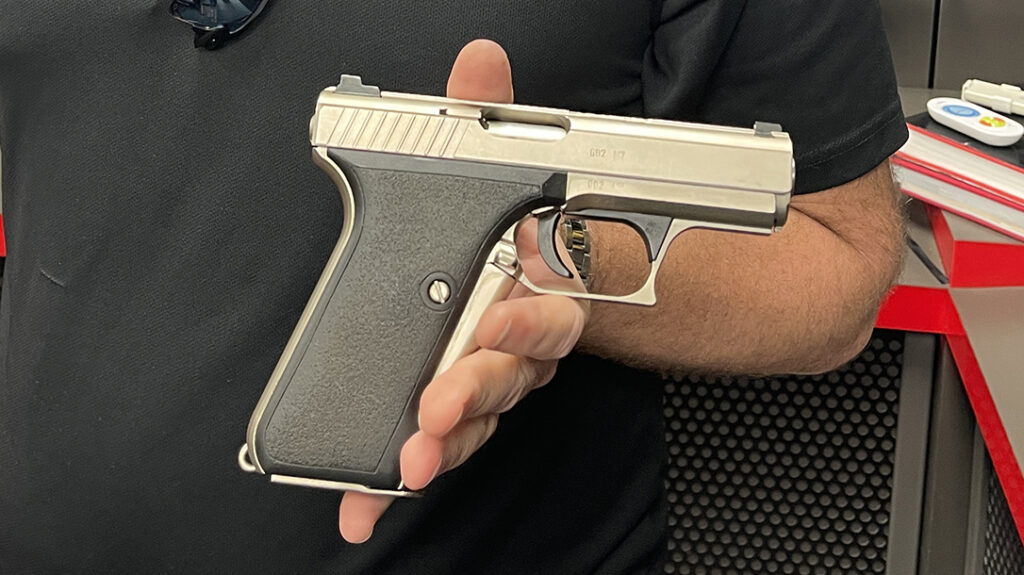
The rarest P7 is the P7M7. Chambered in .45 ACP, it was developed for U.S. Army’s Joint Service Small Arms Program. Pictured is one of the original prototypes of the P7M7. It is considered the Holy Grail of HK pistols.
Mark 23
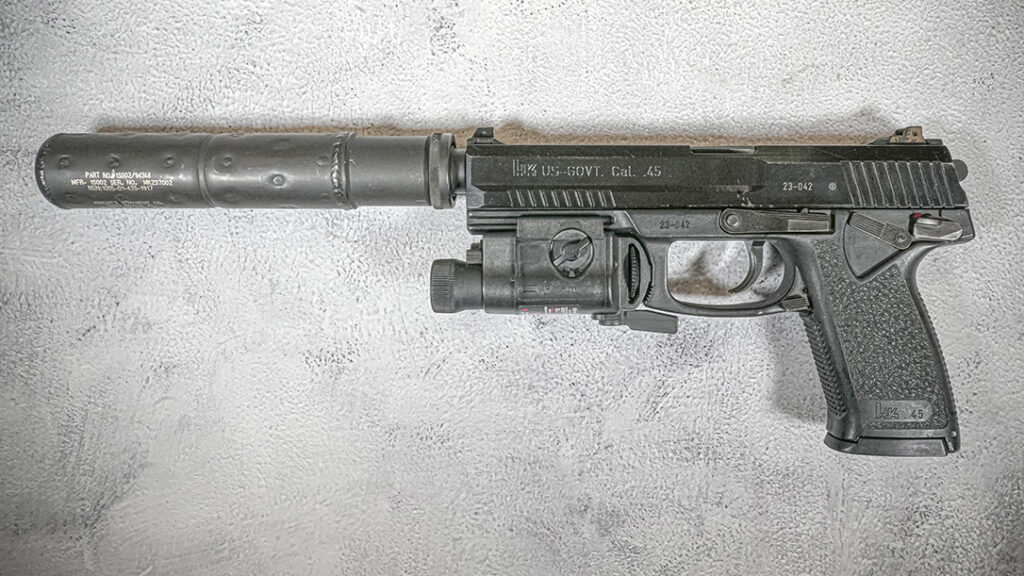
Advertisement — Continue Reading Below
If the P7 is the most sought after pistol, the HK Mark 23 is the most misunderstood and maligned. The MK 23 was adopted by the U.S. Navy Special Warfare community under the Offensive Handgun Weapons System project. Chambered in .45 ACP, the Mk 23 is a large pistol with an overall length of almost 10 inches and weighs 40 ounces. With a magazine capacity of 12 rounds, it was a double-action design with a decocking lever. It was issued with a Knight’s suppressor and a cutting-edge laser-aiming module.
SUBMACHINE GUNS & PDWs
MP5
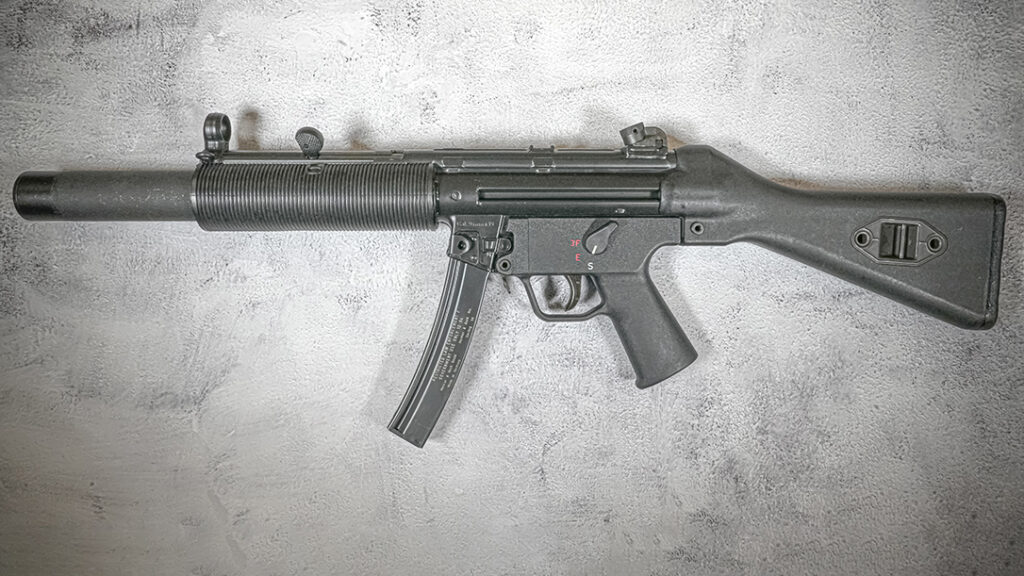
The MP5 family of submachine guns has been the standard by which all other sub guns are measured. Introduced in 1966, the MP5 is a scaled down version of their legendary battle rifle, the G3. Chambered in 9mm, it fires from a closed bolt and features a delayed roller block action. Over the years the MP5 has been offered in a variety of configurations. The MP5SD, shown here, is integrally suppressed with a ported barrel to reduce the velocity of the standard 9mm load. The Gray Room displays every configuration including the MP5K, MP10, and several experimental versions.
Advertisement — Continue Reading Below
MP10
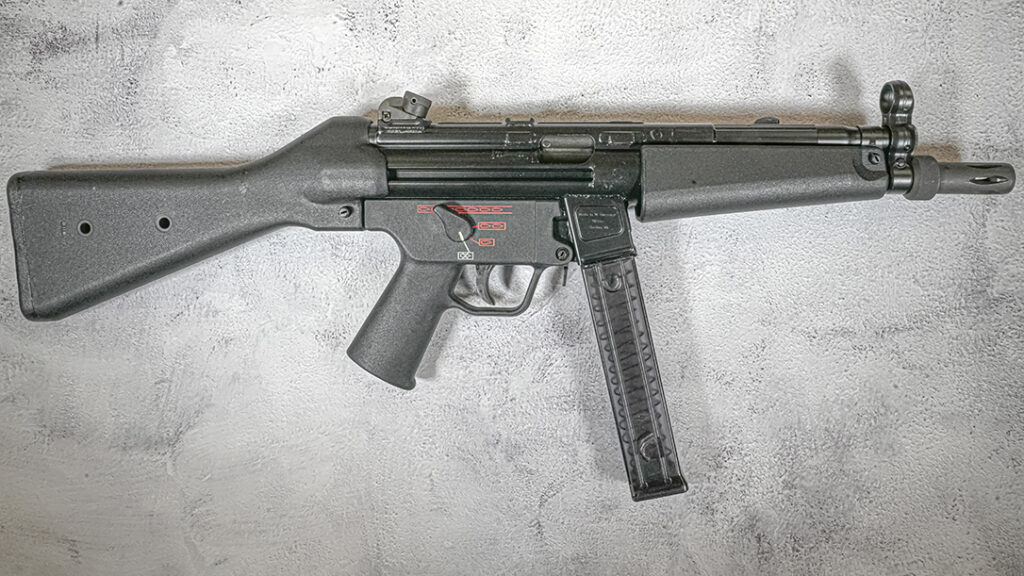
The MP10, chambered in 10mm, was developed at the request of the FBI, who wanted a cartridge that was more effective than the 9mm. It is distinguished from the 9mm version by the translucent straight magazine and the presence of a bolt hold open that locks the bolt open when the magazine is empty. The MP10 featured a fire control system that allowed for semi-auto, 3-round burst, and full-auto. An MP40 version was also offered for a short period of time.
SMG
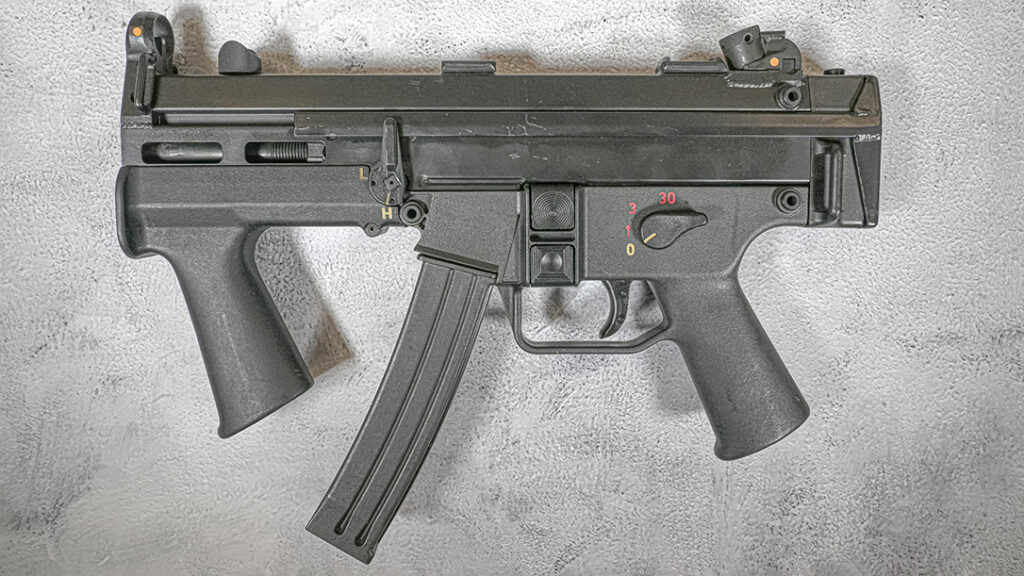
Advertisement — Continue Reading Below
The HK SMG I and SMG II were prototype submachine guns designed to provide a simpler and easier to maintain option to the MP5. It featured a polymer lower receiver and utilized a simple blowback operation system. It had a unique adjustable gas cylinder and gas relief valve in the receiver. The system reduced the velocity of supersonic ammunition to subsonic, improving the sound signature when using a suppressor. Very few were produced and the SMG was never adopted. The Gray Room has an example of both models.
MP7
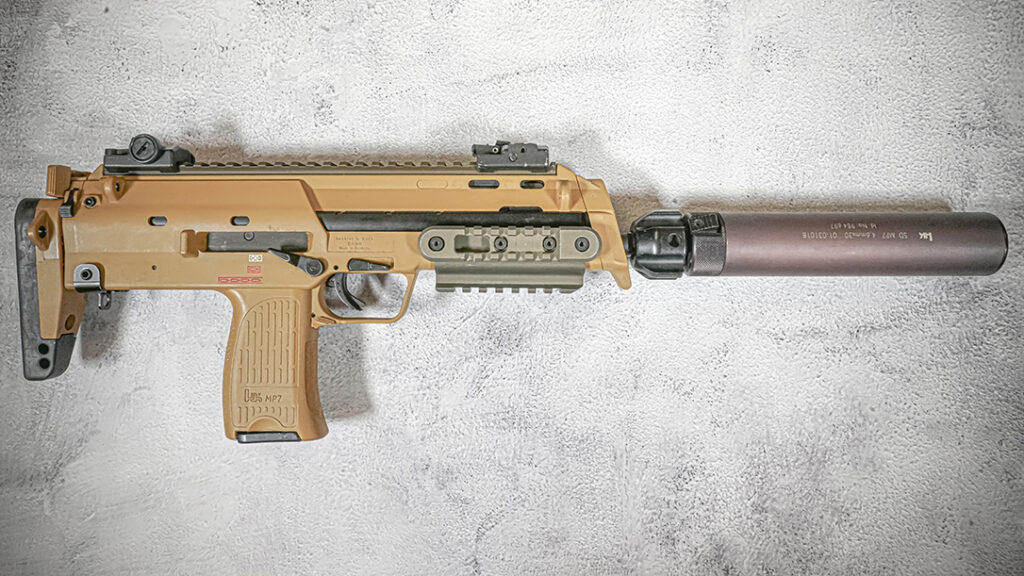
The HK MP7 gained fame from its use in video games and its use by Navy SEALs during the Global War on Terror. The MP7 was designed to meet the, then new, requirement for a Personal Defense Weapon. With the stock collapsed, it is only 16 inches in length. It was chambered in 4.6x30mm, a cartridge HK developed for the MP7. The velocity of the round is around 2,200 fps and offers excellent penetration. With a rate of fire around 950 rounds per minute, the MP7 is very controllable. In the past few years, the MP7 has garnered the interest in U.S. law enforcement. The MP7 shown is the A2 variant.
Advertisement — Continue Reading Below
CARBINES & RIFLES
416C
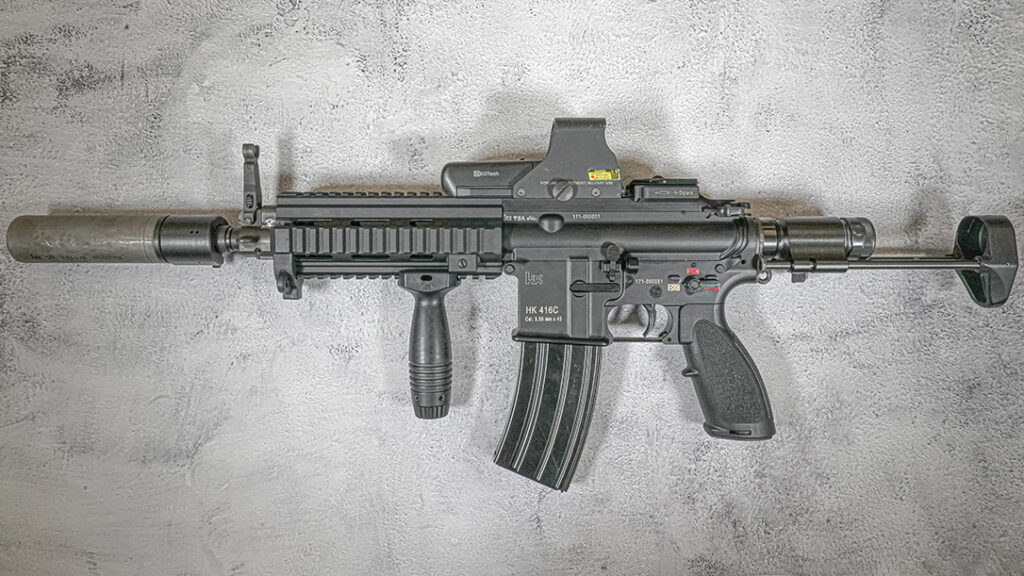
In 2007, the Army announced a competition for a CQB carbine platform. HK submitted the 416 with its short-stroke gas piston system. This design is cleaner and cooler to shoot than a direct impingement gun, especially when using a suppressor. The 416 was adopted by both Army and Navy Special Operations and has proven itself in almost 20 years of service. As with other HK firearms, the 416 is available in a number of variations. The 416 shown in the photo is a rare “C” model with a 9-inch barrel, collapsible stock, suppressor, and an older EOTech optic.
XM-8
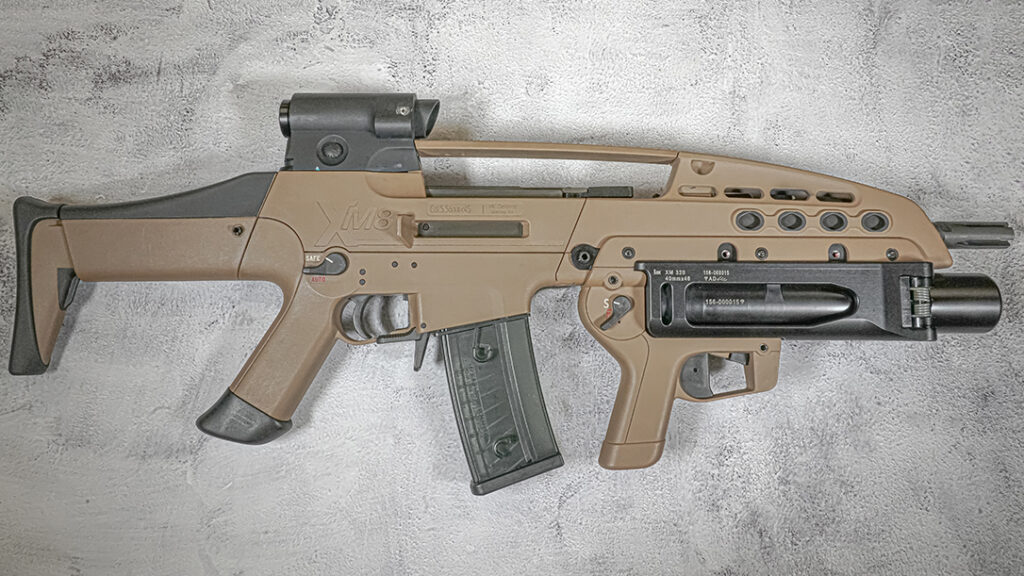
Advertisement — Continue Reading Below
The HK XM-8 was the company’s submission for the ill-fated Objective Individual Combat Weapon program in the early 2000s. Chambered in 5.56 NATO, it was designed to be a family of reconfigurable weapons fulfilling roles from CQB to a fire support platform. Much of the engineering and design of the XM8 can be traced back to the HK36. Integral optics and a XM320 “smart” grenade launcher were some of the advanced features. Unfortunately, the Army canceled the program.
HK Gray Room: Final Thoughts
The Gray Room is a living vault of past, present, and future HK firearms. This article has not even scratched the surface of its contents. I have attempted to highlight products that have been significant or that are very rare. Unfortunately, the Gray Room is not open to the general public. However, HK-USA does offer armorer courses to the general public, and students get an opportunity to step into the history that is the Gray Room.
I would like to thank Nathen Schueth, Bill Dermody, Tommy Booker, and Jason Whitten for their assistance in making this article possible. This only represents a small portion of the collection.
Advertisement — Continue Reading Below
